A classic, cold Sichuanese chicken dish with an unusual name. Strange Flavor Chicken (also known as Bang Bang Chicken) targets all of your taste buds with a combination of salty, sweet, sour, nutty, hot, and numbing flavors.
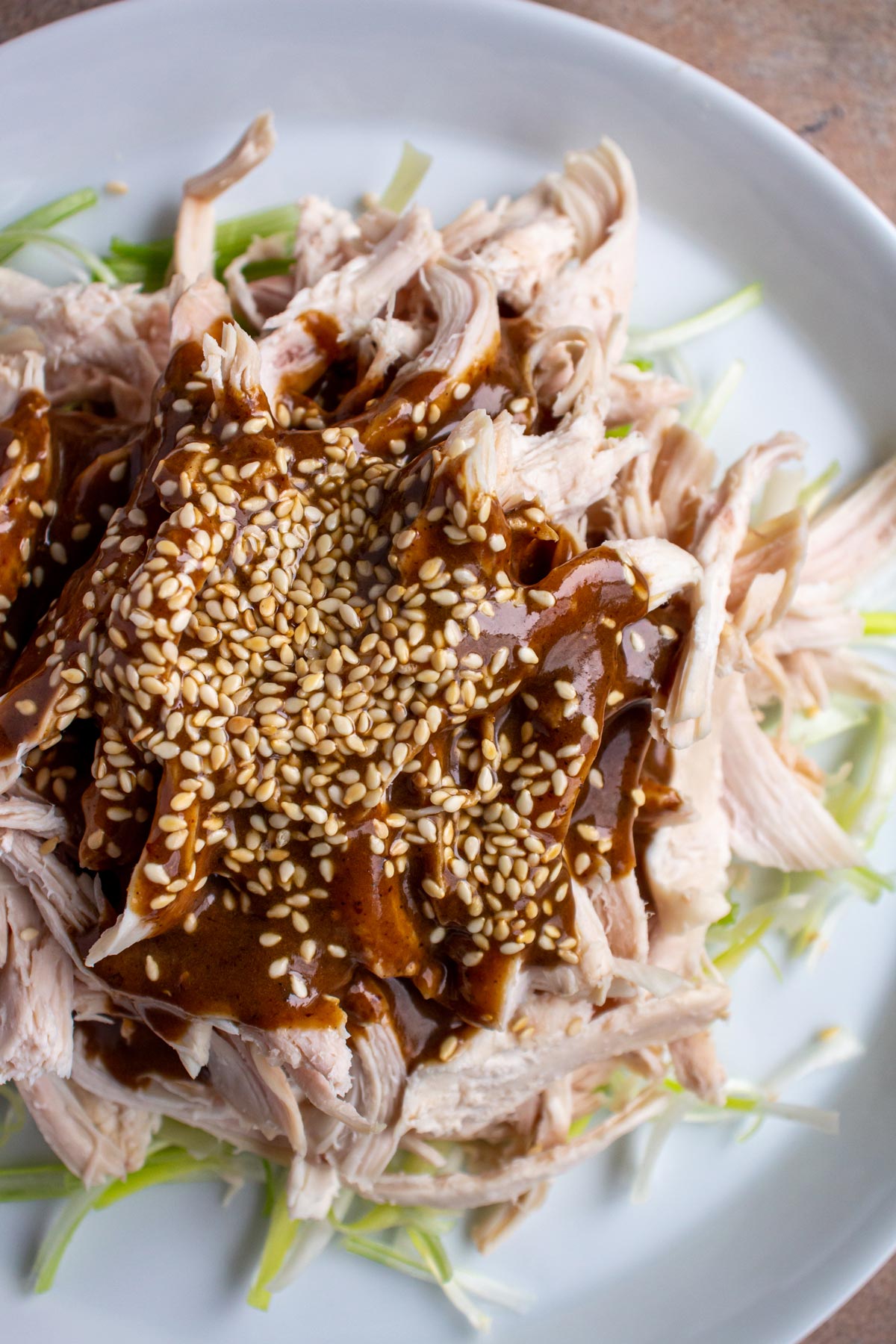
(This recipe was originally published in June 2014, but was updated with new photos and content in 2021).
Strange Flavor Chicken (Guài wèi jī sī 怪味鸡丝) is alternatively called Bang Bang Chicken (Bàng bàng jī 棒棒鸡). This very traditional Sichuanese Chinese appetizer dish features a very intriguing flavor profile.
The "strange flavor" aspect refers to the combination of salty, sweet, sour, nutty, hot, and numbing flavors. This strange flavor sauce really embodies all of those flavors, perhaps with nutty being the standout from the assertive sesame paste and sesame oil. It's gets sweet from sugar, sour from Chinkiang vinegar, salty from soy sauce, hot from chili oil, and numbing from the Sichuan peppercorns.
Meanwhile, the "bang bang" refers to the typical method of banging the meat with wooden sticks or dowels to loosen the fibers and shred the meat apart.
The base of this presentation of strange flavor chicken is julienned scallions (white and light green parts) refreshed in cold water. The icy water actually curls the scallion slivers and makes for a really pretty presentation.
This truly unique Sichuanese dish is a lovely component to any authentic Chinese meal. It's also a great idea for using up leftover roast or boiled chicken by dressing it up with this intense sauce.
Ingredient notes
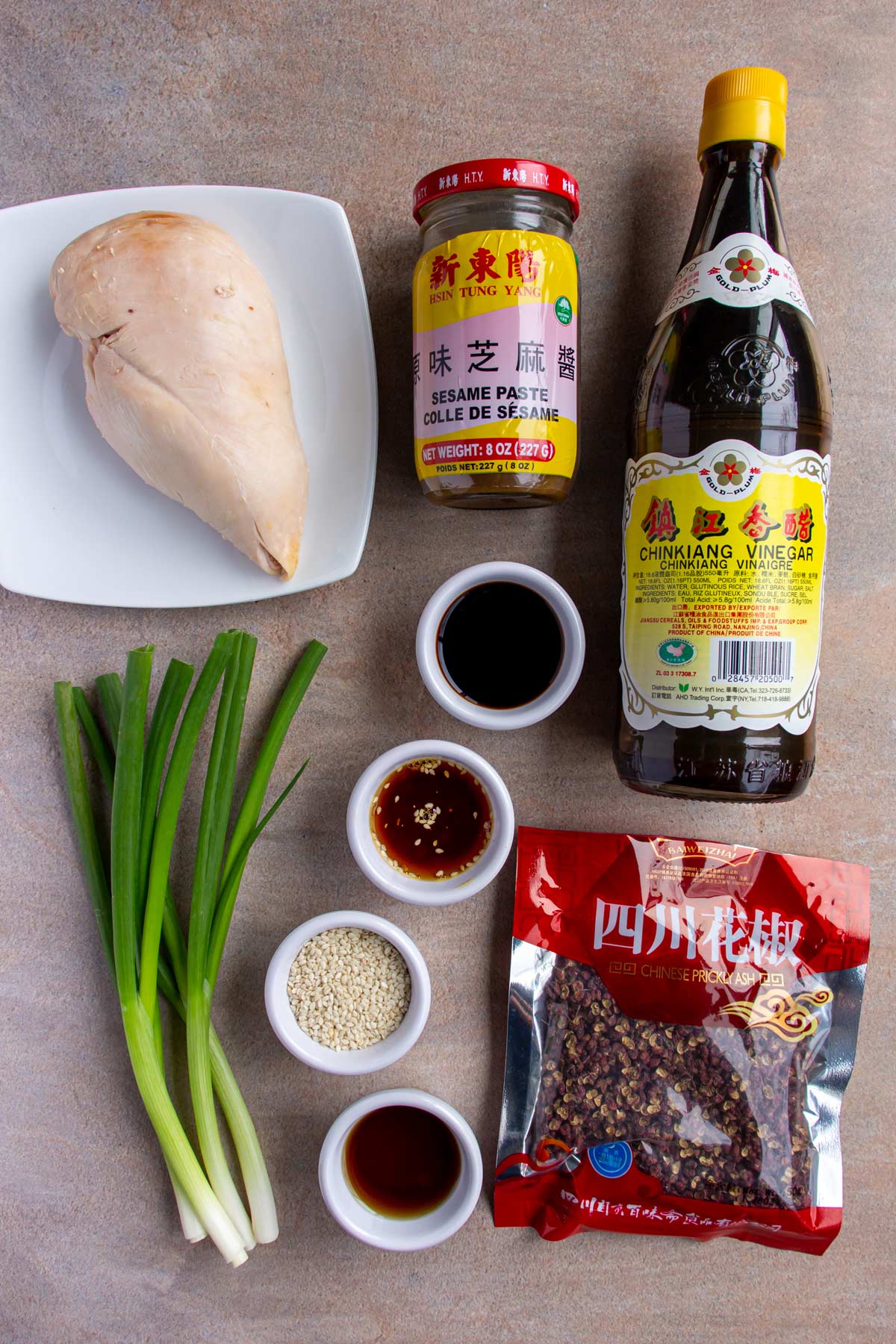
- Cooked Chicken Breast: You can cook the chicken breast meat yourself by poaching, steaming, or baking. Just be careful not to overcook it as it can dry out easily. I often use the breast meat from store-bought rotisserie chicken to save some time. The results are fantastic, absolutely juicy and delicious. You will likely need a couple large cooked breasts to yield about 1 pound of cooked meat for this bang bang chicken.
- Chinkiang or Black Chinese Vinegar: Chinkiang vinegar is a black vinegar made from glutinous rice, and is very popular in Chinese cuisine. Although I highly recommend you seek this out and buy it because it's fabulous (add it to your dumpling dipping sauce), here are a couple suggestions for substitutions:
- 1 tablespoon Chinkiang vinegar = 2 teaspoons rice vinegar + 1 teaspoon soy sauce
- 1 tablespoon Chinkiang vinegar = 1 ½ teaspoons balsamic vinegar + 1 ½ teaspoons soy sauce
- Chinese Sesame Paste: Chinese sesame paste is quite different from tahini, and the ingredients aren't really interchangeable. In a pinch you could use tahini in this recipe but the flavor will be more mild. If your Chinese sesame paste is very thick (like peanut butter), you can thin it out by carefully but vigorously stirring in some neutral flavored oil until it's smooth, soft and somewhat runny. Here are a couple suggestions for substitutions if you can't find Chinese sesame paste:
- Add 1 part toasted sesame oil to 4 parts tahini and mix well
- Toast sesame seeds and grind them in a high-powered food processor or blender with a little toasted sesame oil until you achieve a smooth paste
- Toasted Sesame Oil: Sesame oil is a workhorse in Chinese cuisine. A small amount provides so much flavor to your cooking! Plain sesame oil is lighter in color than toasted sesame oil, which is dark brown, and much more flavorful. The packaging may not say "toasted" but you can tell the difference by the color. Plan to use toasted sesame oil for this strange flavor chicken recipe.
- Chili Oil with Chile Flakes: Although you can purchase chili oil with chili flakes, making homemade chili oil (recipe follows) with Sichuan red chili powder is super easy and absolutely worth it. I make my own and use it for recipes such as this one.
- Sichuan Pepper: Sichuan pepper is sometimes called Sichuan peppercorns (although they aren't actually peppercorns), Chinese prickly ash, or mala pepper. It provides a hot and numbing sensation. If this is a new ingredient to your palate, I'd suggest starting with less before adding more. Purchase it whole (not pre-ground) and grind it yourself using a spice grinder or coffee grinder for the best results.
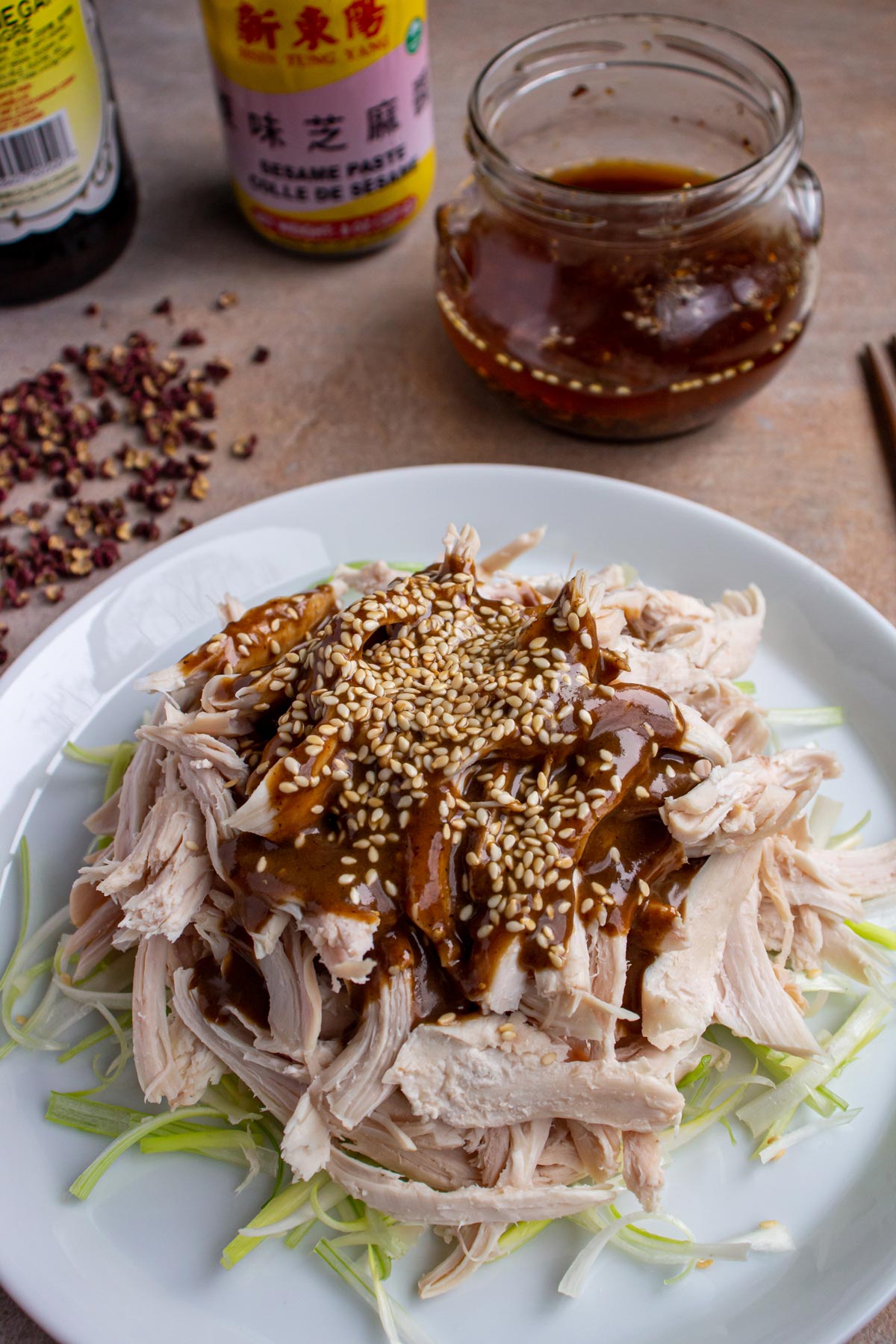
How to make it
Cut the scallions into sections and then slice these lengthwise into thin slivers. Put them into a bowl of cold water to refresh.
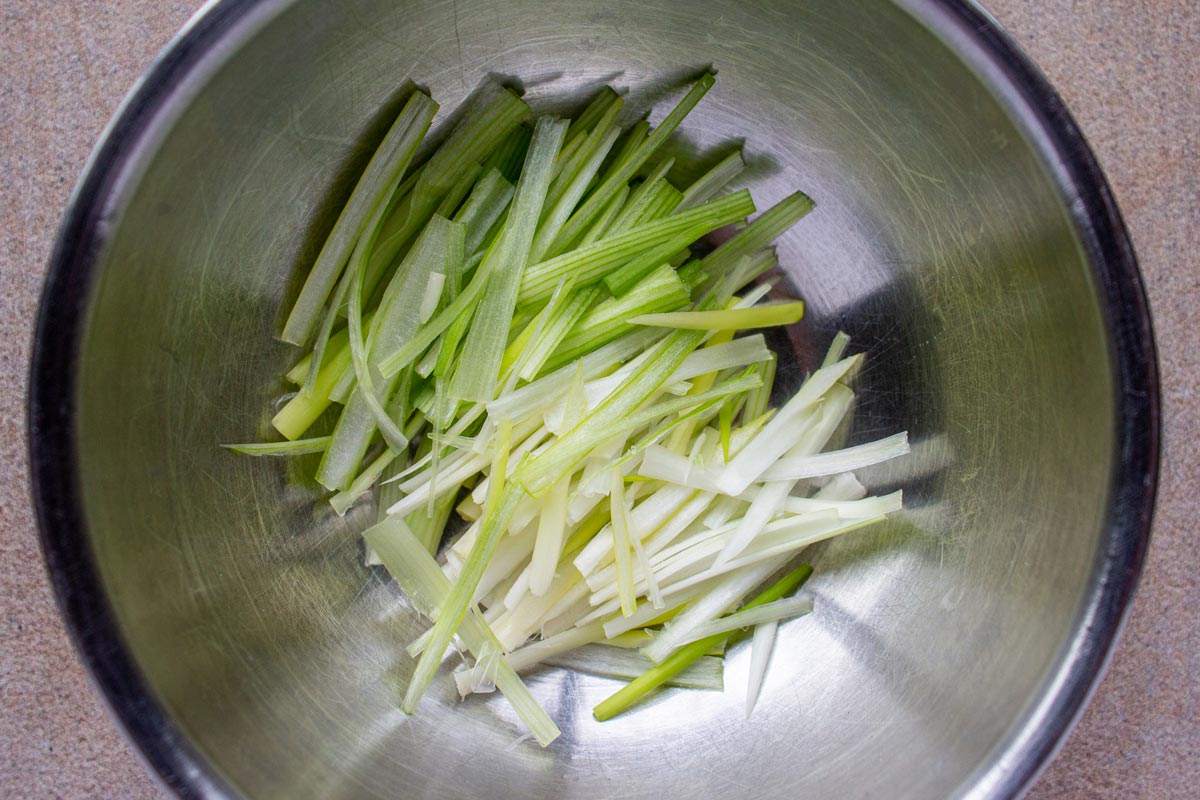
Stir the sugar and salt in the soy sauce and vinegar until dissolved. Gradually stir in the sesame paste to make a smooth sauce (PHOTOS 1-2).
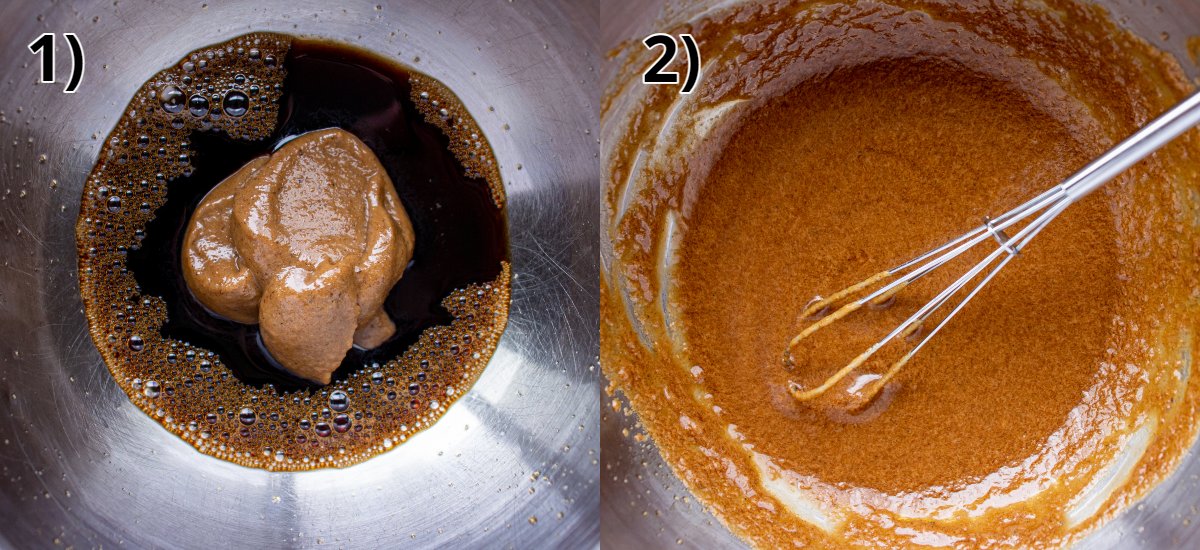
Add the sesame oil, chili oil, and ground Sichuan pepper and mix well (PHOTOS 3-4).
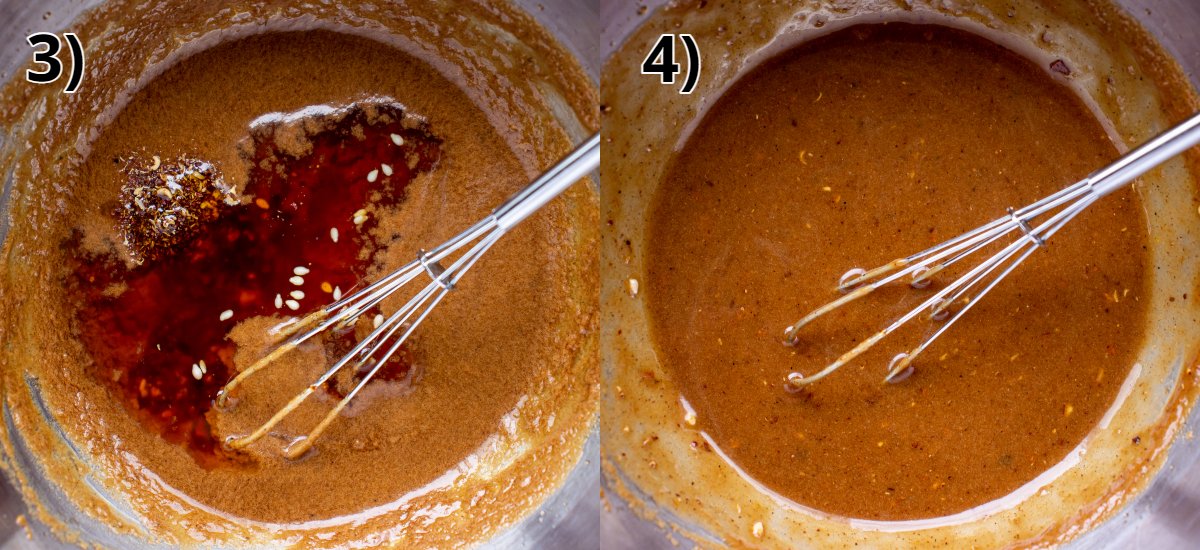
Cut the chicken into slivers about ½ inch wide. If you want to be really authentic, hit it a few times with a rolling pin or wooden dowel to loosen the fibers. Then tear the flesh into shreds by hand.
Shortly before serving, drain the scallions and pile them neatly in the center of your serving dish. Lay the chicken slivers on top of them, then pour the prepared strange flavor sauce over the top of the chicken.
Finally, sprinkle with the sesame seeds and serve immediately.
Please scroll to the bottom of the post for the full recipe (in a printable recipe card) including ingredient amounts and detailed instructions.
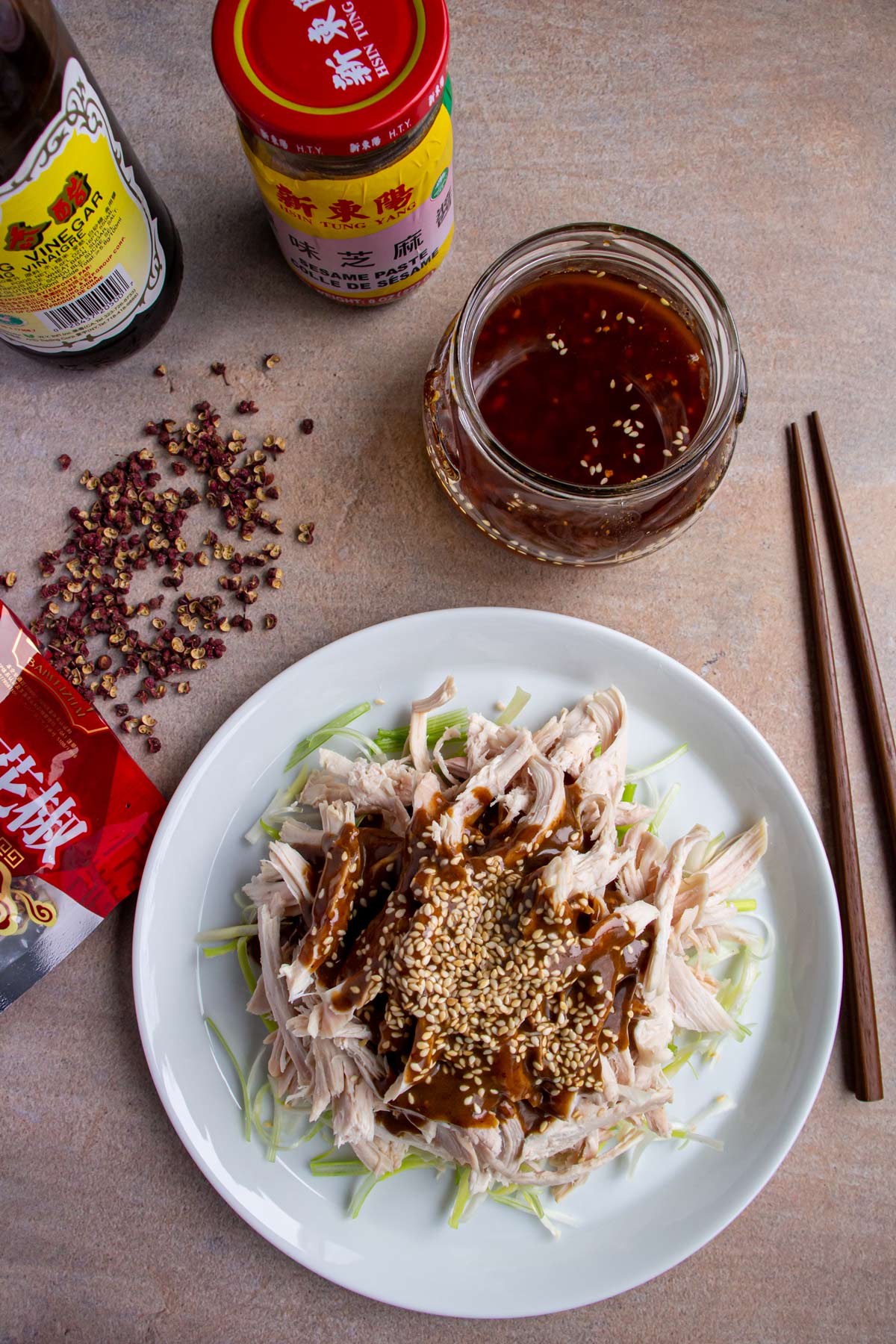
Expert tips
Try this delicious and flavorful strange flavor sauce tossed with Chinese wheat noodles (or in a pinch boiled spaghetti).
It will take a few minutes of vigorous stirring or whisking to dissolve the sugar and salt into the soy sauce and vinegar, but be patient.
After combining the sesame paste with the soy sauce mixture it may look slightly curdled (you are after all emulsifying a fat-based ingredient with water based ones), but it should smooth out immediately after whisking the remaining ingredients into the strange flavor sauce.
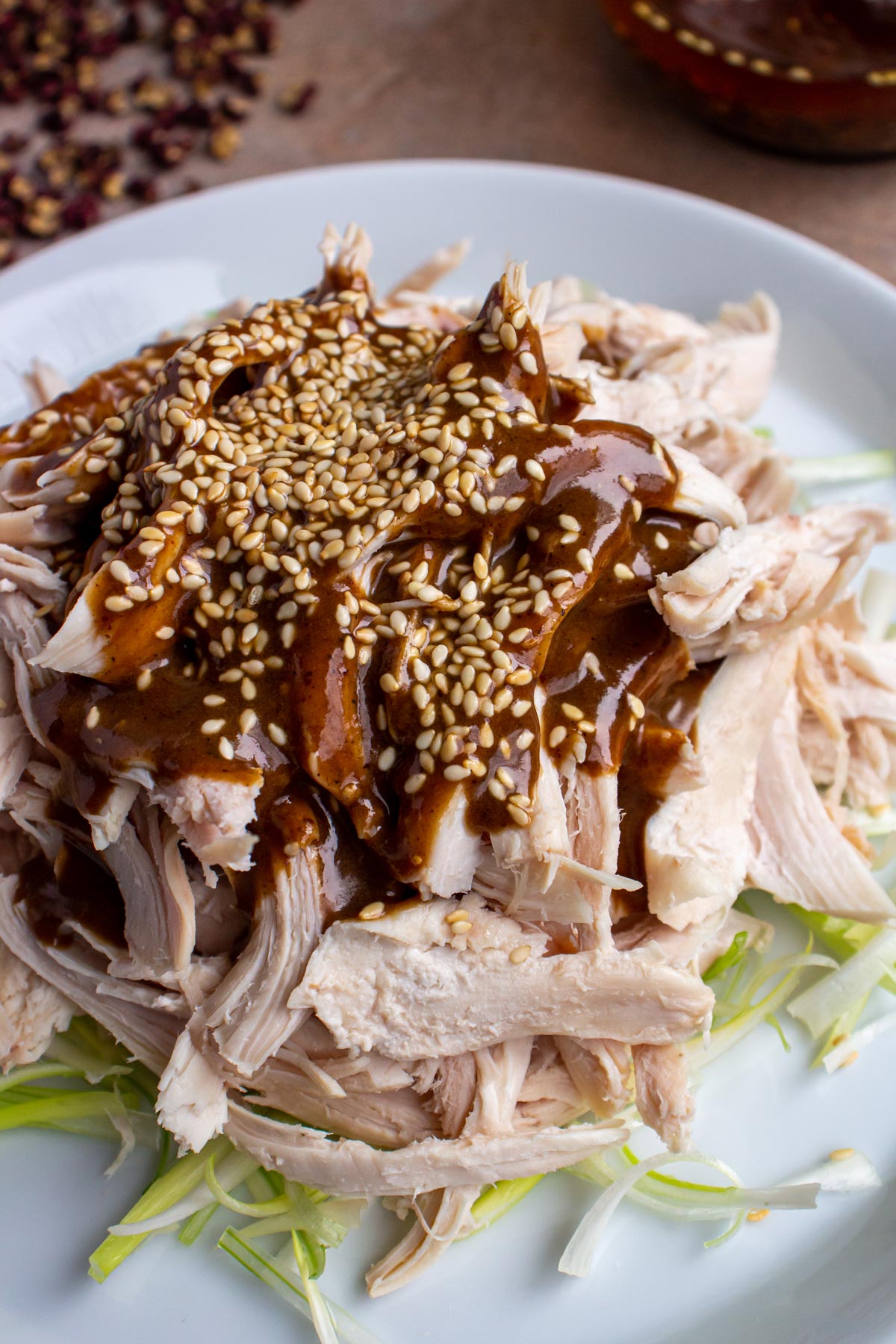
Other recipes you may like
- Chinese Stir-Fried Oyster Mushrooms with Chicken
- Honey Sesame Chicken
- Ants Climbing a Tree (Ma Yi Shang Shu)
- Spicy Vegetable Fried Rice
- Sichuanese "Send-the-Rice-Down" Chopped Celery with Ground Beef
- Chinese Hot and Sour Soup
- Chinese Scallion Pancakes
Tried this recipe? Please leave a star ⭐️⭐️⭐️⭐️⭐️ rating in the recipe card below and/or a review in the comments section further down the page. You can also follow me on social media on Facebook, Instagram, and Pinterest!
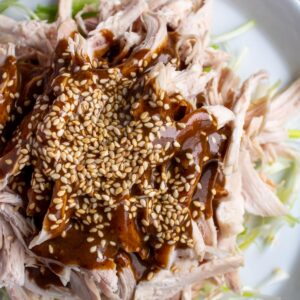
Strange Flavor Chicken (Bang Bang Chicken)
Ingredients
- 8 scallions (green/spring onions), white and light green parts only
- 1 tablespoon granulated sugar
- Salt to taste
- 1 tablespoon light (regular) soy sauce (preferably low-sodium)
- 1 tablespoon Chinkiang or black Chinese vinegar
- 3 tablespoons well-blended Chinese sesame paste
- 1 tablespoon toasted sesame oil
- 2 tablespoons chili oil with chili flakes (homemade recipe follows)
- ½ to 1 teaspoon ground Sichuan pepper
- 1 pound cooked chicken breast meat, cooled
- 1 ½ teaspoons toasted sesame seeds
Instructions
- Cut the scallions into sections and then slice these lengthwise into thin slivers. Put them into a bowl of cold water to refresh.
- Whisk the sugar and salt in the soy sauce and vinegar until dissolved. Gradually whisk in the sesame paste to make a smooth sauce. Add the sesame oil, chili oil, and ground Sichuan pepper and mix well. You should yield about ½ cup of strange flavor sauce.
- Cut the chicken into slivers about ½ inch wide (if you want to be really authentic, hit it a few times with a rolling pin or wooden dowel to loosen the fibers and then tear the flesh into shreds by hand).
- Shortly before serving, drain the scallions and pile them neatly in the center of your serving dish. Lay the chicken slivers on top of them, then pour the prepared sauce over the top. Finally, sprinkle with the sesame seeds and serve immediately.
Notes
- Try this delicious and flavorful strange flavor sauce tossed with Chinese wheat noodles (or in a pinch boiled spaghetti).
- You can cook the chicken breast meat yourself by poaching, steaming, or baking. Just be careful not to overcook it as it can dry out easily. I often use the breast meat from store-bought rotisserie chicken to save some time.
- Adapted from Land of Plenty
Nutrition
*All nutritional information is based on third-party calculations and should be considered estimates. Actual nutritional content will vary with brands used, measuring methods, portion sizes and more.*
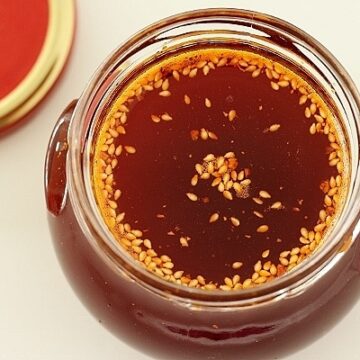
Homemade Chili Oil
Ingredients
- 1 cup plus 1 tablespoon (250 ml) cooking oil
- 2 ounces (50 grams) Sichuanese or Korean ground chilies
- ½ teaspoon sesame seeds
- Small piece of ginger unpeeled, crushed
Instructions
- Heat the oil over a high flame to about 400°F, then leave for 10 minutes to cool to around 275°F.
- Place the ground chilies, sesame seeds and ginger in a heatproof bowl. Have a little cool oil on hand, just in case. When the oil has cooled to the right temperature, pour a little onto the chilies; it should fizz gently but energetically and release a rich, roasty aroma. Pour over the rest of the oil and stir.
- If you think the oil is too hot and the chilies are likely to burn, simply add a little cool oil to release the excess heat. Do, though, make sure that the oil is hot enough; without the fizzing, it won’t generate the rich, roasty fragrance you need.
- When the oil has cooled completely, decant it and the chili sediment into a jar and store in a dark, cool place. Leave it to settle for at least a day before using. The chili oil will keep indefinitely.
Notes
*All nutritional information is based on third-party calculations and should be considered estimates. Actual nutritional content will vary with brands used, measuring methods, portion sizes and more.*

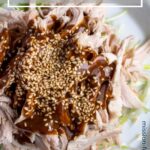


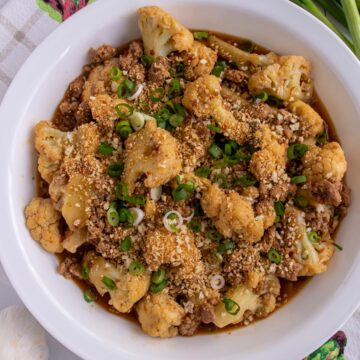
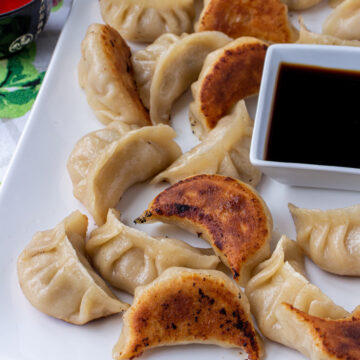
Comments
No Comments